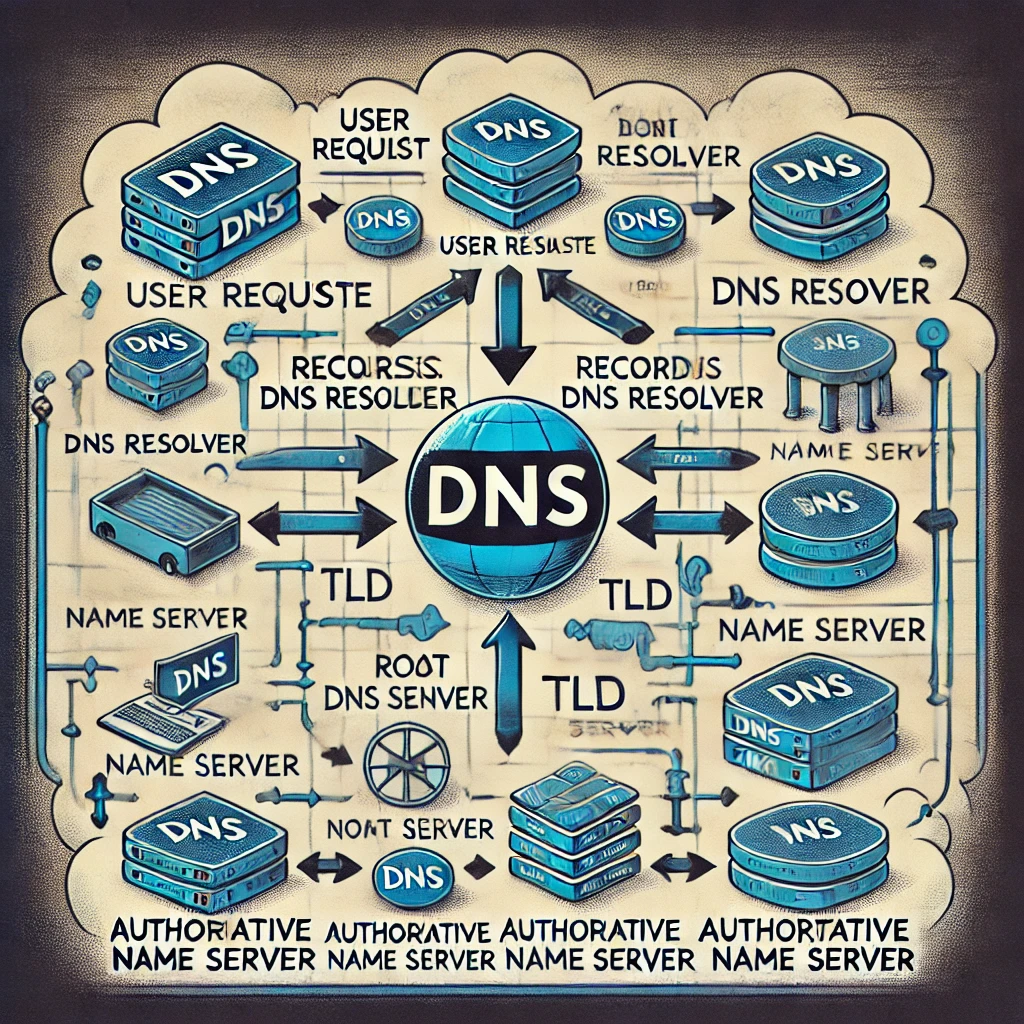In today’s digital world, businesses rely on fast, reliable, and scalable networks to ensure seamless application performance. Load balancers play a crucial role in distributing network traffic efficiently across multiple servers, preventing overload, reducing latency, and enhancing system reliability.
In this post, we’ll explore what load balancers are, how they work, their types, and why they are essential for modern IT infrastructure.
🔍 What is a Load Balancer?
A load balancer is a network device or software application that distributes incoming traffic across multiple servers or backend resources to ensure optimal performance and prevent server failures.
Key Functions of Load Balancers:
✅ Distributes network traffic evenly among servers
✅ Improves scalability and availability of applications
✅ Enhances security by preventing DDoS attacks and ensuring redundancy
✅ Provides fault tolerance by redirecting traffic if a server fails
⚙️ How Load Balancers Work
When a client sends a request (e.g., accessing a website), the load balancer determines the best available server based on various algorithms and routing rules. It then forwards the request to that server while maintaining session persistence and monitoring overall health.
Example Flow:
1️⃣ User sends a request to example.com
2️⃣ The request reaches the load balancer
3️⃣ The load balancer checks available backend servers
4️⃣ It selects the best-performing server
5️⃣ The request is forwarded, and the response is sent back to the user
This process ensures no single server is overwhelmed and helps maintain a smooth user experience.
🏗️ Types of Load Balancers
1️⃣ Hardware Load Balancers
These are physical appliances that provide high-performance traffic distribution. They are used in enterprise data centers and support advanced traffic management features.
Examples: F5 Networks, Citrix ADC, Cisco ACE
2️⃣ Software Load Balancers
These are installed on servers and provide flexibility and scalability. They can run on cloud platforms or on-premises.
Examples: HAProxy, Nginx, Apache Traffic Server
3️⃣ Cloud-Based Load Balancers
Offered as managed services by cloud providers, these balancers scale dynamically based on demand and integrate with cloud infrastructure.
Examples: AWS Elastic Load Balancer (ELB), Azure Load Balancer, Google Cloud Load Balancer
🔄 Load Balancing Algorithms
Load balancers use different algorithms to distribute traffic efficiently:
📌 Round Robin: Assigns each new request to the next server in sequence.
📌 Least Connections: Directs traffic to the server with the fewest active connections.
📌 IP Hash: Routes requests based on the client’s IP address, ensuring session persistence.
📌 Weighted Round Robin: Assigns traffic based on server performance capacity.
📌 Least Response Time: Routes traffic to the server with the lowest response time.
The choice of algorithm depends on the application’s needs and infrastructure.
🔐 Security Benefits of Load Balancers
Beyond performance optimization, load balancers also enhance security:
- DDoS Mitigation: Prevents volumetric attacks by distributing traffic and filtering threats.
- SSL Termination: Offloads SSL encryption and decryption to improve efficiency.
- Web Application Firewall (WAF) Integration: Protects against malicious traffic.
- Access Control & Authentication: Ensures secure routing based on user authentication policies.
📈 When Should You Use a Load Balancer?
✔️ When your website or application handles high traffic
✔️ To prevent downtime by distributing requests across multiple servers
✔️ For cloud applications requiring auto-scaling and redundancy
✔️ To secure backend servers and optimize user experience
🎯 Final Thoughts
Load balancers are a must-have for any business that values scalability, performance, and reliability. Whether you are running a high-traffic website, cloud application, or enterprise network, implementing a robust load balancing strategy ensures seamless operation and enhanced security.
Want to learn more about optimizing network performance? Follow Packet-Switched.com for expert insights on networking and IT infrastructure! 🚀





In conclusion, **Load Balancers: Optimizing Performance and Reliability in Networks** highlights the critical role of load balancers in ensuring seamless network performance, scalability, and reliability. By efficiently distributing traffic across servers, load balancers enhance response times, prevent failures, and optimize resource utilization. Whether for traditional data centers or cloud-based environments, implementing load balancing solutions is essential for maintaining high availability and delivering a smooth user experience in modern network infrastructures.
In conclusion, **Load Balancers: Optimizing Performance and Reliability in Networks** play a crucial role in ensuring seamless traffic distribution, enhanced reliability, and improved scalability for modern digital infrastructures. By efficiently managing network loads, preventing server overloads, and optimizing resource utilization, load balancers contribute to high availability, faster response times, and a superior user experience. As businesses continue to evolve in a digital-first world, implementing robust load balancing solutions is essential for maintaining performance, security, and operational efficiency in any network environment.
In conclusion, **Load Balancers: Optimizing Performance and Reliability in Networks** play a crucial role in ensuring efficient traffic distribution, minimizing downtime, and enhancing overall network performance. By intelligently distributing workloads across multiple servers, load balancers help maintain system reliability, scalability, and security. Whether deployed in cloud, on-premises, or hybrid environments, they are essential for optimizing resource utilization and delivering seamless user experiences. As networks continue to grow in complexity, leveraging advanced load-balancing techniques will remain vital for sustaining high availability and performance.
In conclusion, **Load Balancers: Optimizing Performance and Reliability in Networks** highlights the critical role of load balancers in ensuring efficient traffic distribution, minimizing downtime, and enhancing network reliability. By intelligently managing workloads across multiple servers, load balancers improve performance, scalability, and security for businesses of all sizes. As technology continues to evolve, implementing effective load balancing strategies will remain essential for maintaining seamless and resilient network operations.
In conclusion, *Load Balancers: Optimizing Performance and Reliability in Networks* plays a crucial role in maintaining efficient and reliable network operations. By distributing traffic evenly across multiple servers, load balancers enhance performance, reduce downtime, and ensure seamless user experiences. Whether for cloud computing, web applications, or enterprise networks, implementing a load-balancing solution is essential for scalability, security, and overall network efficiency.
In conclusion, load balancers play a crucial role in optimizing network performance and ensuring reliability by efficiently distributing traffic across multiple servers. By preventing overload, minimizing downtime, and enhancing response times, they contribute to seamless user experiences and improved system stability. Whether deployed for small applications or large-scale cloud environments, load balancers are essential for maintaining high availability, scalability, and security in modern networks.
Load balancers play a crucial role in optimizing network performance and ensuring reliability by efficiently distributing traffic across multiple servers. By preventing bottlenecks, enhancing scalability, and improving fault tolerance, they help maintain seamless operations for applications and services. Implementing a robust load-balancing strategy is essential for businesses seeking high availability, security, and efficient resource utilization in an ever-evolving digital landscape.
In conclusion, load balancers play a crucial role in optimizing network performance and ensuring reliability by efficiently distributing traffic across multiple servers. They enhance scalability, minimize downtime, and improve user experience by preventing server overloads and maintaining seamless operations. By implementing load balancing solutions, businesses can achieve greater efficiency, security, and resilience in their network infrastructure.